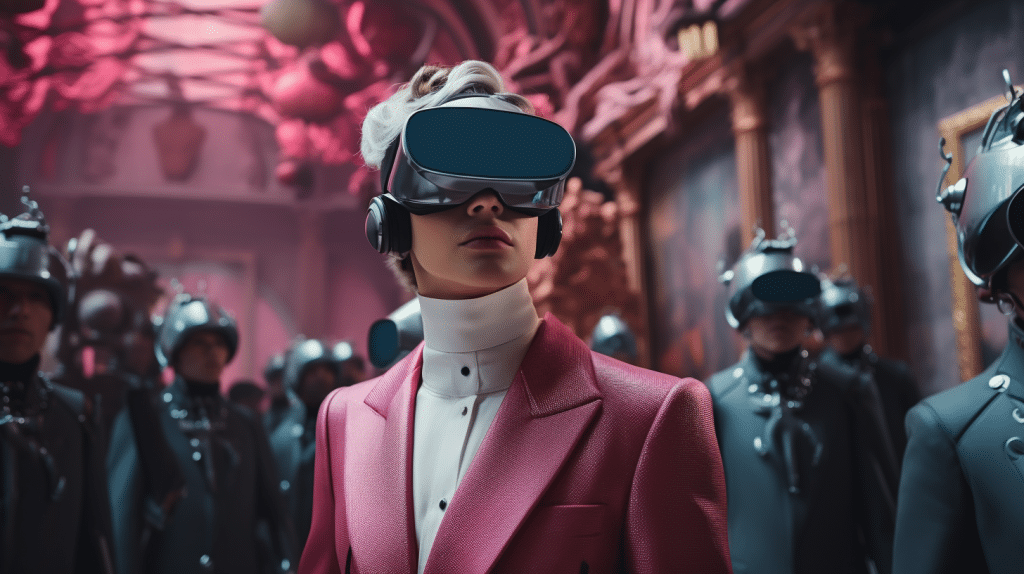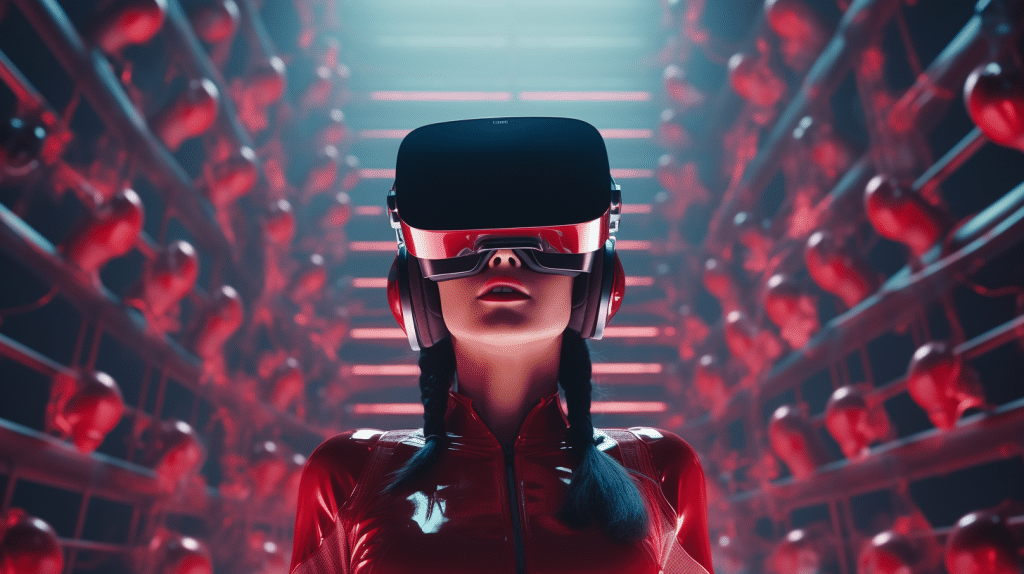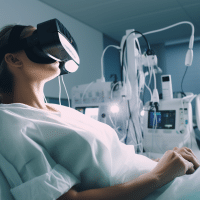VR Accessibility: Ensuring Inclusivity in the Virtual Realm

The world of virtual reality (VR) is an incredibly exciting and innovative space that has the potential to revolutionize the way we interact with technology. Imagine being able to step into a virtual world where you can explore new environments, engage with realistic simulations, and connect with others in ways that were once unimaginable. As this technology continues to evolve and improve, it is crucial to prioritize VR accessibility to ensure that everyone can partake in this immersive experience.
By making VR accessible to individuals of all physical and cognitive abilities, we can create a more inclusive virtual realm. This means designing VR experiences that accommodate diverse needs, such as providing options for different input methods, optimizing visuals and audio for various sensory capabilities, and considering ergonomic factors for prolonged use. By focusing on accessibility, we open up a world of possibilities for people of all ages, genders, and abilities to engage and enjoy VR technology.
Moreover, ensuring VR accessibility goes beyond just providing equal opportunities. It also fosters a sense of empowerment and independence for individuals who may face barriers in the physical world. VR can offer unique experiences and opportunities for exploration, socialization, and personal growth. By making VR accessible, we not only bridge the digital divide but also enable everyone to unlock their full potential in the virtual world.
In conclusion, prioritizing VR accessibility is vital as we strive to create a more inclusive and equitable future. By considering the diverse needs and experiences of individuals, we can harness the full potential of VR technology and truly revolutionize the way we interact with the digital realm. Let’s work together to ensure that everyone has the opportunity to explore, discover, and thrive in the virtual world.

What is VR Accessibility?
Virtual Reality (VR) is an incredibly exciting and innovative technology that has the potential to revolutionize the way we perceive and interact with the world around us. By immersing users in simulated environments, VR can transport them to places they have never been before, enabling unique and immersive experiences.
However, it is crucial to ensure that this groundbreaking technology is accessible to everyone, regardless of their physical or cognitive abilities. VR accessibility encompasses the idea of making VR technology available and inclusive for all users. This involves not only developing user-friendly interfaces and intuitive controls but also ensuring compatibility with assistive devices that cater to individuals with disabilities.
Exploring the Excitement of VR Board Games!
Valve Index VR Headset: Your Gateway to a New Era of Virtual Exploration
Moreover, VR accessibility extends beyond hardware and software considerations. It also encompasses designing VR experiences that accommodate diverse needs and preferences. For example, providing options for adjustable audio cues, subtitles, or alternative modes of interaction can enhance the accessibility and inclusivity of VR content.
By prioritizing accessibility in VR development, we can open up a world of possibilities for individuals with disabilities, enabling them to participate fully in the transformative experiences VR has to offer. By embracing inclusive design principles and making VR technology accessible to all users, we can truly unlock the potential and benefits of this amazing technology for everyone to enjoy.
Understanding the Challenges of VR Accessibility
As virtual reality (VR) technology continues to rapidly evolve and advance, it becomes increasingly crucial to ensure that everyone, regardless of their background or abilities, has equal access to the same opportunities and immersive experiences. VR accessibility plays a pivotal role in fostering an inclusive virtual realm that embraces diversity and is open to all.
The challenge of VR accessibility stems from the fact that it is still a relatively new technology, and the hardware and software required to access it can often be expensive and complex to use. Moreover, individuals with disabilities may encounter difficulties in utilizing VR due to its physical and sensory requirements, further excluding them from experiencing its wonders.
However, there is hope on the horizon. Numerous initiatives and organizations are diligently working towards making VR more accessible and inclusive. Take, for instance, the Virtual Reality Accessibility Initiative (VRAI), a non-profit organization dedicated to ensuring that people with disabilities can fully participate in the VR realm. VRAI provides valuable resources, guidance, and support to developers, manufacturers, and users alike, fostering an environment where everyone can access and enjoy the transformative benefits of VR technology.
Addressing VR accessibility is not only a matter of technological advancement but also a matter of social responsibility. By investing in the right resources and providing unwavering support, we can bridge the accessibility gap and create an inclusive virtual realm that empowers and inspires all individuals, regardless of their abilities.
In conclusion, VR accessibility is an important and ongoing issue that demands attention and action. By embracing inclusivity and working together, we can unlock the full potential of virtual reality and ensure that everyone has the opportunity to embark on incredible journeys within this exciting and innovative realm.
Exploring the Benefits of VR Accessibility
The world of virtual reality (VR) is an ever-evolving landscape of possibilities, and with the recent advancements in accessibility, more and more people are able to experience the wonders of the virtual realm. VR accessibility is a key factor in ensuring that everyone can enjoy the immersive and interactive experiences that VR has to offer. From voice-activated commands to eye-tracking technology, VR accessibility has come a long way in recent years.
This has enabled people with physical disabilities to access the virtual world with ease, allowing them to explore and interact with the environment in ways that were previously impossible. With the help of these advancements, VR can be used to provide a safe and inclusive space for people of all abilities to explore and engage with the world around them.
VR accessibility is an important step towards creating a more inclusive virtual world, and it is essential that we continue to strive for greater accessibility in the future. By doing so, we can ensure that everyone can experience the wonders of the virtual realm and enjoy the immersive and interactive experiences that VR has to offer.

Creating an Inclusive VR Environment
As virtual reality (VR) technology continues to evolve and advance, it becomes increasingly important to prioritize the accessibility of the virtual realm for all individuals. Ensuring VR accessibility is not just about creating a welcoming environment, but also about fostering inclusivity and equal opportunities for all users. By making the necessary accommodations and adaptations, we can guarantee that everyone, including people with disabilities, can fully immerse themselves in the wonders of the virtual world.
Virtual Wallets, Real Cash: A Blueprint for Making Money with VR
Immerse, Experience, Repeat: The Magic of VR Simulation
To achieve true accessibility, developers must carefully consider the unique needs of individuals with disabilities when designing virtual experiences. This involves not only creating an intuitive and user-friendly interface, but also providing customizable options that cater to diverse preferences and requirements. Moreover, it is crucial for developers to ensure compatibility with assistive technologies like screen readers and voice recognition software, enabling seamless interaction and navigation within virtual environments.
By paying attention to these details and taking deliberate steps, developers can open up a world of possibilities, ensuring that everyone can enjoy the immersive and exhilarating realm of virtual reality.
VR Accessibility Tools and Resources
The world of virtual reality (VR) is an incredibly exciting and innovative space that continues to evolve at a rapid pace. It has the potential to revolutionize various industries and transform the way we interact with digital content. However, it is crucial to ensure that everyone, regardless of their physical or cognitive abilities, can access and enjoy the benefits of VR.
To achieve this inclusivity, VR accessibility tools and resources have been developed. These tools aim to make the virtual realm more inclusive for people with disabilities by providing various solutions. For example, voice recognition software can enable individuals with limited mobility to interact with VR environments using their voice commands. Assistive technology, such as haptic feedback devices or motion controllers, can assist people with physical disabilities in navigating and interacting with the virtual world.
Moreover, developers play a vital role in creating accessible VR experiences. They can utilize the available resources and guidelines to design and develop VR applications that cater to a wide range of users. These resources provide valuable insights and recommendations on designing user interfaces, implementing audio and visual cues, and optimizing user interactions to ensure accessibility for individuals with diverse needs.
By embracing these tools, resources, and inclusive design principles, developers can create VR experiences that are accessible and enjoyable for everyone. This not only benefits individuals with disabilities but also contributes to a more inclusive and diverse virtual reality ecosystem.
In summary, the world of virtual reality holds immense potential, and it is essential to prioritize accessibility to ensure that everyone can benefit from this exciting technology. Through the use of VR accessibility tools and resources, as well as the commitment of developers to inclusive design practices, we can create a future where VR truly becomes an inclusive and enjoyable experience for all.
Conclusion
As the world of virtual reality continues to expand and evolve, it is crucial that we prioritize the accessibility of this transformative technology. By ensuring that everyone, regardless of their background or abilities, has equal opportunities to engage with virtual reality, we can create an inclusive virtual realm that fosters excitement, innovation, and limitless possibilities.
Accessibility in VR is not just about providing physical access, but also about addressing barriers that may prevent individuals from fully experiencing this immersive world. It encompasses considerations such as providing alternative input methods for those with mobility limitations, accommodating diverse sensory needs, and designing user interfaces that are intuitive and easy to navigate for all users.
When we prioritize VR accessibility, we open up a world of opportunities for individuals who may otherwise be excluded. It enables people of all ages, abilities, and backgrounds to explore and interact with virtual environments, unleashing their creativity, enhancing their learning experiences, and even improving their overall well-being.

By investing in the right tools, resources, and research, we can ensure that VR technology reaches and benefits as many people as possible. This includes collaborating with experts in accessibility, conducting user testing with diverse populations, and continuously refining our approaches to make VR more inclusive and accessible for all.
In summary, by prioritizing VR accessibility, we are not only ensuring equal opportunities, but also fostering a more inclusive and diverse virtual world. Let us continue to work together to break down barriers, embrace innovation, and create a future where everyone can fully experience the wonders of virtual reality.
In conclusion, VR accessibility plays a crucial role in advancing towards a truly inclusive virtual environment. By comprehending the unique challenges and exploring the vast benefits of VR accessibility, we can foster a more equitable and accessible virtual world. Through the integration of VR accessibility tools and resources, we can ensure that individuals from all walks of life have the opportunity to immerse themselves in the wonders of virtual reality.
As this transformative technology continues to evolve, it remains paramount for us to prioritize accessibility and inclusivity in the virtual realm. By doing so, we can pave the way for a future where everyone can fully participate and thrive in the immersive virtual experiences that await.


















